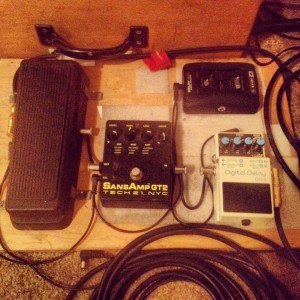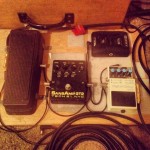***This is my last post on Dan Pink’s book To Sell Is Human before it becomes available for purchase on 31 Dec 2012. If you are quick, you can still pre-order it and qualify for a number of awesome freebies. If you pick it up later, you lose the freebies! Thanks to Dan Pink and his team for sharing an early copy of the book with me and letting me be a part of his Launch Team.***
The last principle from Dan Pink’s To Sell Is Human that I want to highlight is what he calls Clarity. Pink writes that those working in sales, or who try to persuade people, need to focus on bringing clarity to people’s needs instead of simply trying to push a product or agenda. It’s not about moving units off a shelf, cars off a lot, or making sure to up sell the lobster before it goes bad. It’s about finding out what a person REALLY needs and then pairing that person with the right kind of solution.
Pink writes that Clarity is, “…the capacity to help others see their situations in fresh and more revealing ways and to identify problems they didn’t realize they had.” The way I read this is that clarity is the ability to creatively troubleshoot a problem from all angles, hoping to unearth unrealized issues that may be the true source of the problem. This clarifies the real problem before offering a solution. This provides clarity to the conversation.
The opposite of clarity would be confusion. Instead of trying to troubleshoot the issue far too often I feel like sales people try to push a product on me just to make a sale or move a product off a shelf and usually in a hurry. Nothing leaves a more bitter taste in my mouth than to feel like someone is trying to milk me for my money and doesn’t care about my needs. You can ask my wife. I get all up tight at the slightest hint of manipulation or coercion. I usually want to run away or punch a salesman in the mouth if I can sense someone is trying to control me instead of guide me to the right answer. I know I react that way to manipulation, so my personal goal is to never come close to ever making someone else feel that way. It’s the worst.
Make A Connection: How to Troubleshoot Your Pedal Board
I’ve played guitar professionally for a number of years. Since I was a kid I’ve listened to music with an extremely critical ear. In my guitar playing that critical ear has helped me decide what guitar sounds I like and players I want to mimic. I slowly tested and finally chose different kinds of gear to help me get the exact sound I like. I’m also a minimalist in my approach. I don’t go as far as cats like Jack White who likes playing guitars made out of a nail, a metal string, and a coke bottle. But I don’t go to the other extreme either to get the sound I like.

Troubleshooting a customer’s problem is like trying to fix your pedal board in the middle of a concert.
So here’s a picture of my famous custom handmade pedal board. It’s very basic and some would say oddly put together. From left to right: wah, distortion, tap delay, and (top right) wireless receiver. I’ve used this for every show I’ve played for years now. I am intimately familiar with every scratch, piece of Velcro, knob, screw, cable, and function on the board. Having an intimate knowledge of these items has saved me in critical moments on stage many times.
It is very common for things to go wrong on stage for a number of reasons. For example, someone gets excited and steps on my board while trying get on stage with the band, someone with a drink in their hand spills the whole thing on my board, or something just flat-out breaks down and craps out. For whatever reason, things sometimes go wrong. However, my familiarity with the board helps me troubleshoot the problem quickly and get the show going again.
Here’s the connection I see to Dan Pink’s Clarity: when something goes wrong with my pedal board during a performance, I have to be able to troubleshoot it immediately in order to keep the concert going. As in sales or persuading others, it’s important to be able to clearly identify what really is the problem or you’ll prescribe the wrong solution to someone and they won’t be able to keep their “concert” going. And that can cause people to sometimes feel manipulated.
I can’t count the times I’ve had to scramble on stage to fix my gear. When something goes wrong, I take a quick look at my board, listen the sounds, look at the lights, wiggle a cable here, rip out a cable there, and boom – I’m back in the game and people are dancing again. Sometimes I have to be super creative. But a creative solution can only come from knowing my gear. I will never get the right answer if I don’t know how to accurately troubleshoot the issue from multiple angles with a depth of knowledge and familiarity.
Where I disagree a bit with Mr. Pink is his suggestion that knowledge is no longer the key to successfully providing clarity or persuading people. He suggests it’s more about being service oriented instead of your depth of knowledge. I disagree, but only a bit. I agree clarity and service is where we’re moving, I think my pedal board analogy demonstrates that we need to be even more knowledgeable about our relative areas of expertise in order to provide the right answer. If we don’t know our “pedal boards” with a deep familiarity from years of deep fascination and experience how can we ever provide real clarity to others? How can we really troubleshoot a problem if we don’t understand all the possibilities? While information may be ubiquitous now because of the internet, the internet can’t teach you all the creative approaches to your “pedal board” without you actually getting your hands on it.
***BREAK***
I’ve really enjoyed reading Dan’s new book and sharing these ideas with you. I encourage you to pick it up, especially if you’re in sales, if you haven’t already. If you do, I’m pretty sure it’ll change the way you think. Look for a new post from me in a week or so. Not too sure what I’m going to pull off the shelf next to write about next. But I doubt I’ll be quiet for very long 🙂







Great post, Marc!